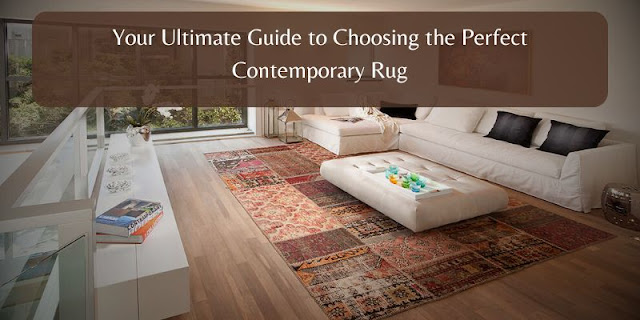The Evolution of Contemporary Rugs: From Art to Functionality
Floor coverings have always been more than functional items; they embody culture, artistry, and individual expression. In modern interior design, contemporary rugs have emerged as essential elements, transitioning from traditional adornments to versatile pieces of functional art. This transformation stems from evolving lifestyles, innovative manufacturing techniques, and the growing need for adaptable spaces that blend creativity with practicality.
From Tradition to Modern Creativity
Historically, decorative textiles often reflected cultural identity and conveyed symbolic meanings. Conventional patterns were deeply rooted in the traditions of the regions where they originated, such as intricate Persian or Turkish designs. In contrast, modern rug designs broke away from these norms during the 20th-century modernist movement, embracing bold simplicity, abstract forms, and experimental approaches.
This artistic shift turned floor coverings into mediums for creative expression. Pioneering designers and artists, influenced by abstract movements, contributed to unique designs featuring geometric patterns and unconventional color schemes. Today, these pieces continue to act as artistic focal points in living spaces, reflecting both heritage and innovation.
Advanced Materials and Techniques
Modern textiles benefit from a combination of traditional craftsmanship and cutting-edge technologies. While natural materials like wool and cotton remain favored for their durability and softness, the incorporation of synthetic alternatives—such as viscose and polypropylene—has expanded options for affordability and resilience.
Artisans and manufacturers employ diverse methods, including hand-knotted craftsmanship, flat weaving, and automated production. Handcrafted pieces cater to those seeking luxury, while machine-made options make these artistic textiles accessible to a wider audience. This balance ensures diverse offerings for various tastes, budgets, and functional requirements.
A Blend of Aesthetics and Functionality
Contemporary floor textiles excel at uniting visual appeal with practical benefits, making them an integral part of modern interiors.
Creating Defined Spaces
In open-plan designs, textiles play a crucial role in separating living areas into distinct zones. Through their patterns and textures, they visually demarcate spaces while adding cohesion or contrast, depending on the design goals.
Enhancing Comfort
Besides their visual contribution, these coverings add comfort to rooms by providing warmth, absorbing noise, and softening hard flooring surfaces. They help create an inviting and serene environment suitable for various activities.
Built for Longevity
Designed to accommodate today’s fast-paced lifestyles, many modern pieces feature stain-resistant and easy-to-maintain materials. This durability makes them ideal for busy homes, including those with children or pets, and for spaces with heavy foot traffic.
Eco-Friendly Innovations
The growing focus on sustainability has significantly influenced modern rug production. Many manufacturers now prioritize eco-conscious practices, utilizing recycled fibers, non-toxic dyes, and renewable materials. Additionally, initiatives supporting ethical labor practices in weaving communities have made these products both sustainable and socially responsible.
Eco-friendly designs, such as those crafted from recycled silk or upcycled materials, not only reduce environmental impact but also offer unique and meaningful additions to interiors. They allow homeowners to embrace style while contributing positively to the planet.
Finding the Right Design
Choosing the perfect piece for a room involves more than selecting an appealing pattern. Factors like size, material, and functionality must also be considered:
- Size and Layout: Ensure the piece complements the dimensions of the room and its purpose. Larger options can anchor furniture arrangements, while smaller designs work well in accenting specific areas.
- Color and Style: Whether you prefer neutral tones or bold patterns, opt for a design that either harmonizes with or enhances your room’s decor.
- Material and Durability: Wool or blended options are excellent for long-lasting comfort, while synthetic materials offer practicality for high-use spaces.
Investment in Art and Utility
While many floor textiles serve practical purposes, others are valued as collectible art. Limited-edition designs or collaborations with renowned artists often appreciate in value, adding exclusivity and distinction to homes. These unique creations offer not only aesthetic appeal but also act as conversation starters and investment pieces.
A Glimpse into the Future
As design trends evolve, modern rugs are likely to integrate further with smart technologies, such as heating solutions or sensors embedded within the material. The emphasis on eco-conscious production will also drive the exploration of new sustainable materials, pushing the boundaries of innovation.
Conclusion
The transformation of contemporary rugs from traditional decor to multifunctional masterpieces exemplifies their growing importance in design and daily life. These versatile pieces strike the perfect balance between artistic expression and practical use, making them indispensable in modern interiors.
Whether you're looking to redefine your living space, add warmth and texture, or invest in a statement piece, contemporary rugs offer endless possibilities. Their evolution reflects the intersection of design, functionality, and sustainability, ensuring they remain a timeless choice for any home.




Comments
Post a Comment